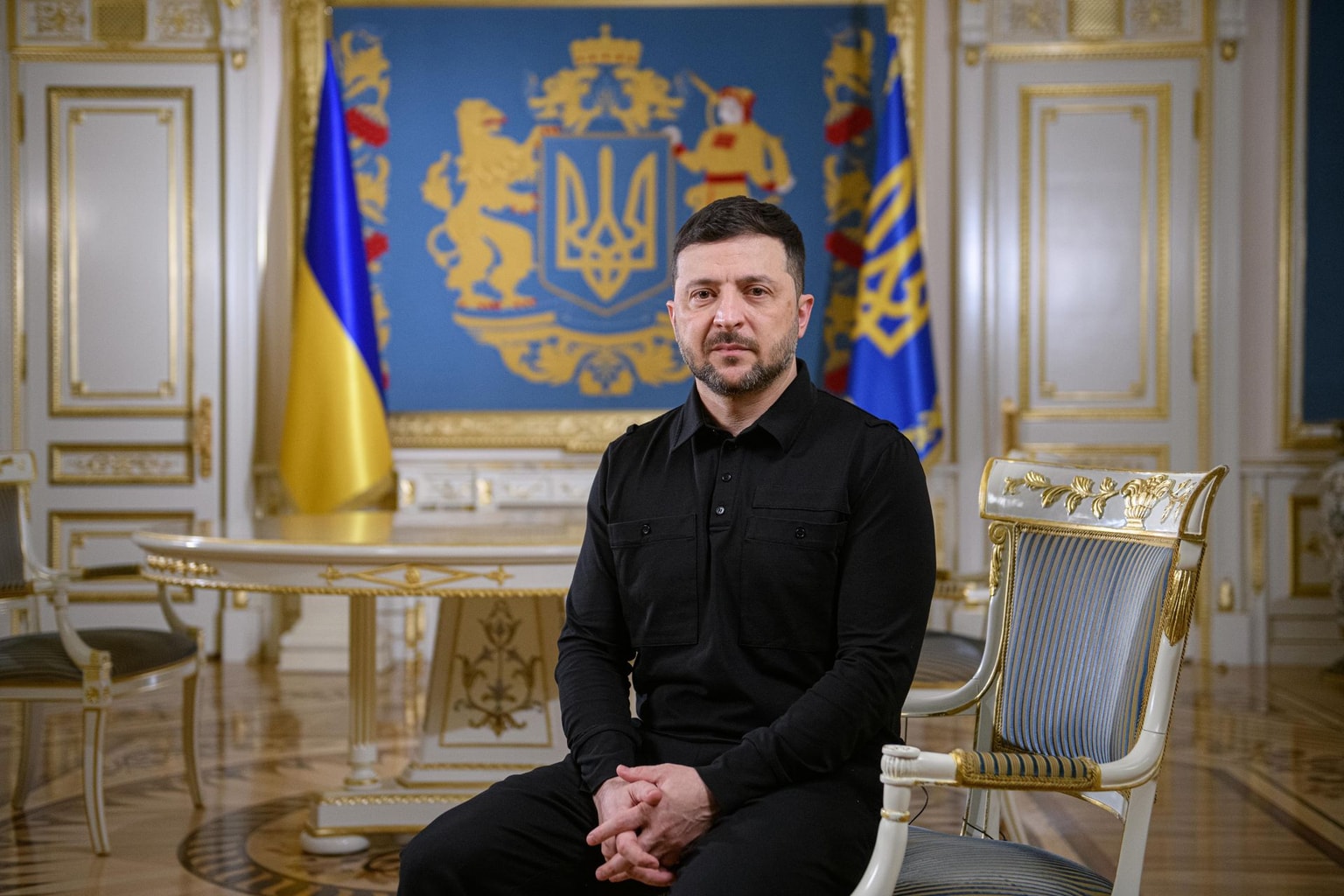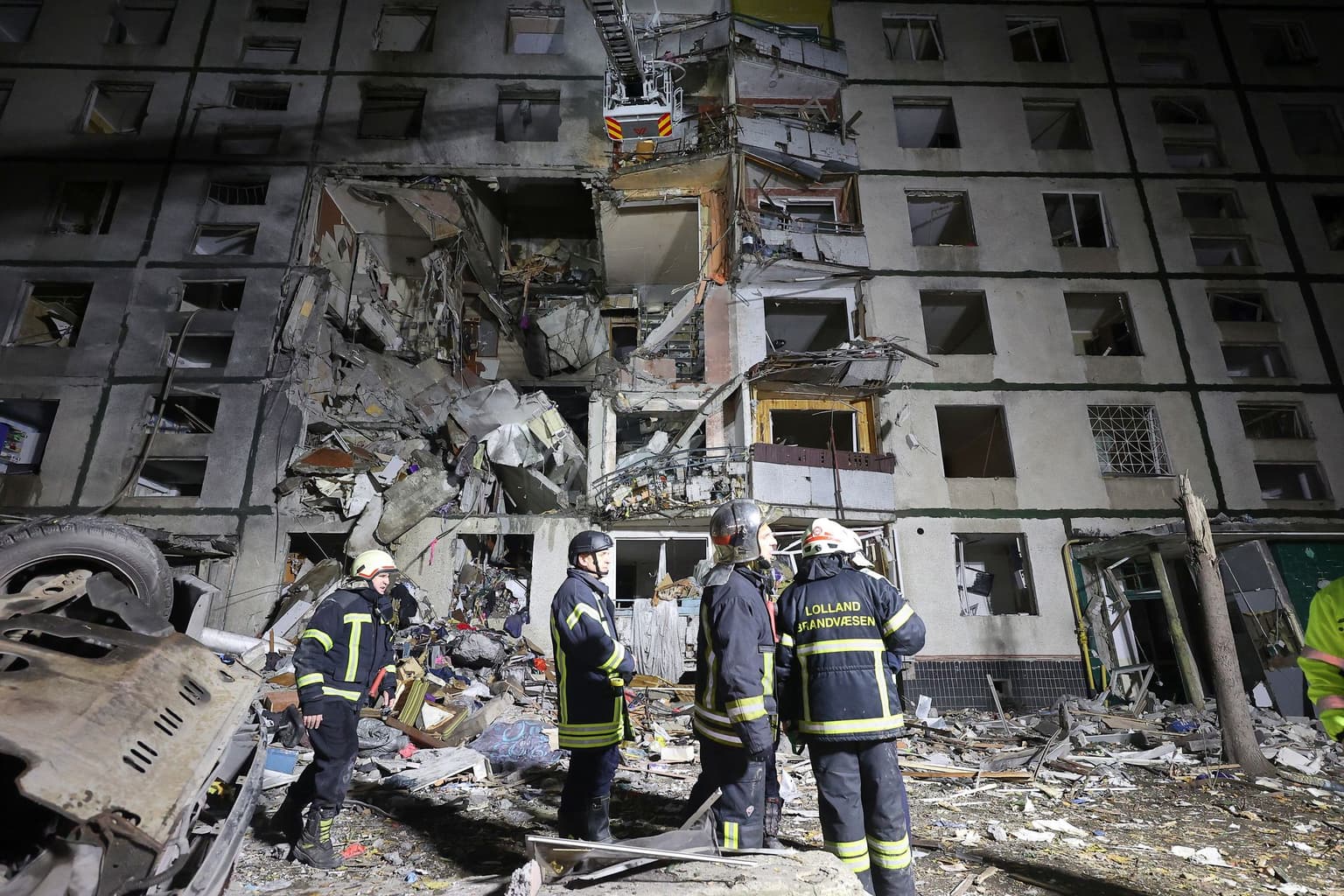
Russia has upgraded its already devastating glide bombs
Rescuers work at the site of a nine-story residential building destroyed by a Russian glide bomb in Kharkiv, Ukraine, on Oct. 31, 2024. (Ukrinform / NurPhoto via Getty Images)
Russia has begun using long-range glide bombs, known as KABs, to hit residential areas deep behind the front line.
In the last week, Moscow has, for the first time, targeted Mykolaiv, Poltava, and the city of Lozova in Kharkiv Oblast with these weapons. Lozova, located 150 kilometers (93 miles) from the front line, was hit by a UMPB-5R bomb on Oct. 18 that struck a residential neighborhood, injuring five civilians and destroying multiple homes. On Oct. 24, Odesa was reportedly attacked by KABs for the first time.
The attacks mark a troubling shift — Russia now uses yet another type of long-range weapon capable of reaching cities deep in Ukraine’s rear and pushing the boundaries of what used to be considered “safer” zones for civilians and infrastructure.
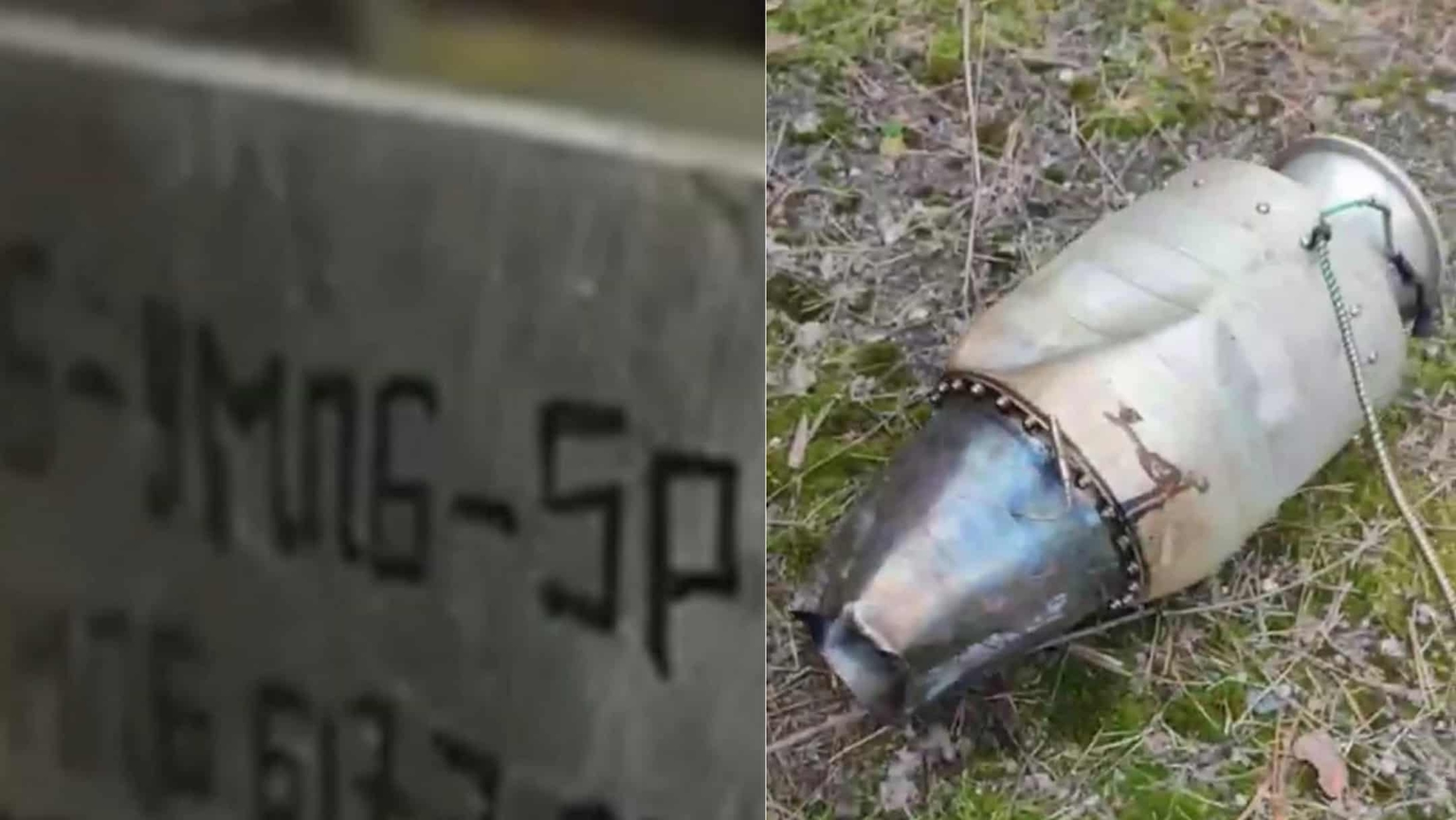
“The combination of the deluge of drone attacks over the last couple of months, combined with the target list that you're talking about, suggests a concerted effort to try to weaken the resolve and support for the conflict in Ukraine by bringing consequences to population centers,” Wes Rumbaugh, a fellow at the Center for Strategic and International Studies (CSIS), told the Kyiv Independent.
Beyond that, the exact reasons for the renewed emphasis on powered glide bombs remain unclear.
“The questions that are impossible to answer are: are these replacements for something else that would’ve been used to conduct the same strikes?” Rumbaugh continues.
“Are they using propulsion glide bombs as a replacement because there are not enough cruise missiles to go around? Is it a question of drone production? There’s a lot of uncertainty.”
What Is a KAB?
KABs (short for Korrektiruyemaya Aviabomba) are Russian guided aerial bombs equipped with wings and precision guidance systems such as GPS, laser, or infrared targeting.
Unlike traditional free-fall bombs, KABs can glide tens of kilometers before impact, allowing aircraft to drop them from a distance.
Warhead sizes vary by model, ranging from around 300 kilograms to 1.5 metric tons, enough to destroy multistorey buildings.
At the start of the full-scale invasion, Russia relied on its vast stocks of Soviet-era FAB-250, FAB-500, and FAB-1500 bombs. However, dropping them directly over a target meant flying dangerously close to Ukrainian air defenses.

“The question was how to make them glide farther and adjust course mid-air. The answer was a crude but effective retrofit — the Unified Gliding and Correction Module (UMPK) — that gave them both lift and limited control,” Konstyantyn Kryvolap, aviation expert and former test engineer at the Antonov design bureau, told the Kyiv Independent.
The latest KAB upgrade
Most recently, Russia has entered serial production of an upgraded generation of KABs. These bombs are now believed to reach distances of up to 200 kilometers, making them more capable of striking deep into Ukraine’s rear.
“One test reached 193 kilometers. These weapons were first used on Dnipro, and now we’re seeing them appear in other cities,” said Vadym Skibitskyi, Deputy Chief of Ukraine’s Defence Intelligence (HUR), at the ‘Energy That Sustains Ukraine’ forum on Oct. 20.
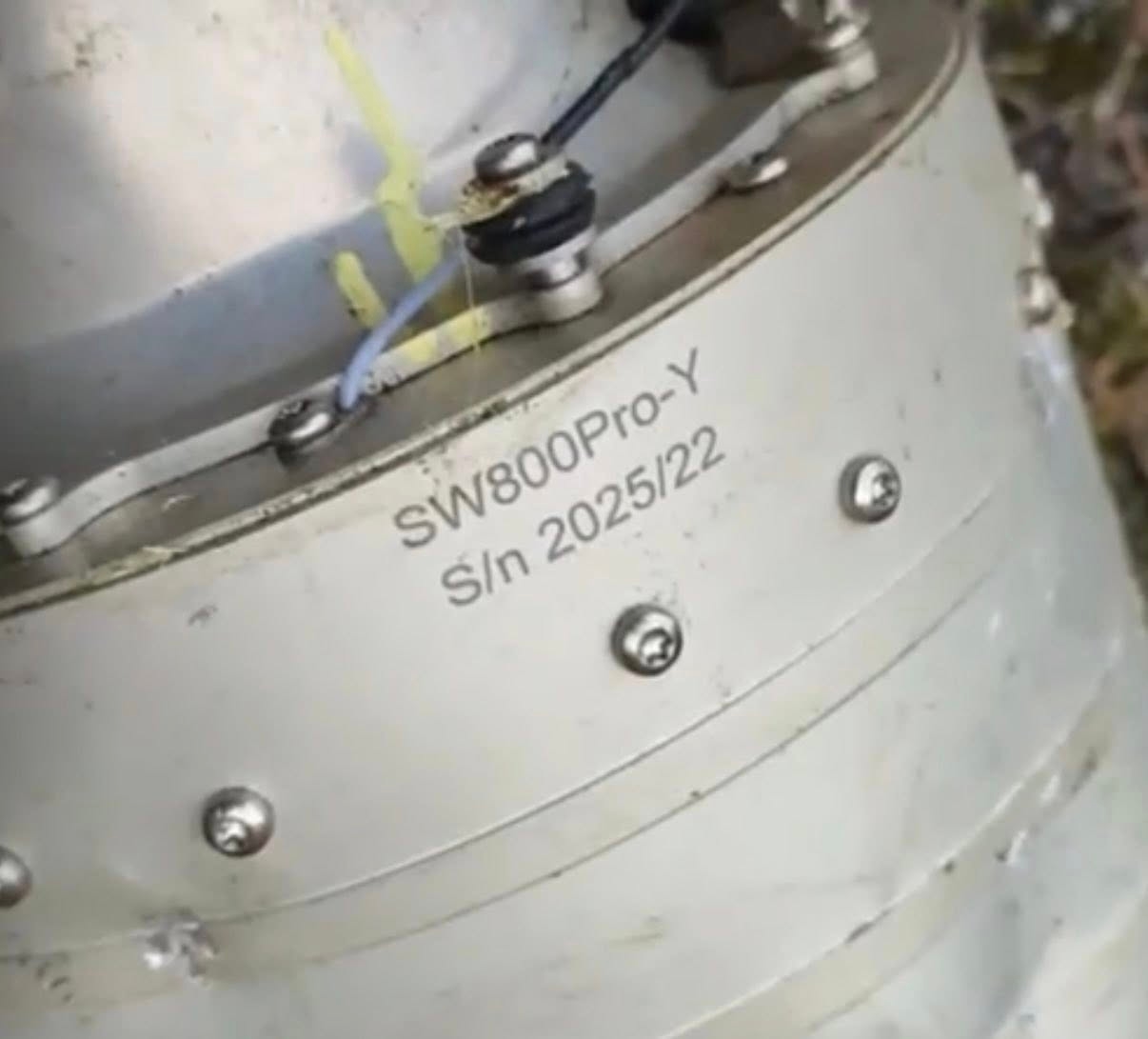
This latest upgrade likely stems from improvements to the UMPK system, possibly including added propulsion that extends the standoff range without requiring aircraft to enter Ukrainian-controlled airspace.
Why is Russia improving KABs?
Wes Rumbaugh argues that the move reflects Russia’s inability to secure air superiority over Ukraine.
“In some respects, the requirement to add propulsion to its glide bombs speaks to the success of Ukrainian air defenders. It suggests that Russia has not been able to establish aerial dominance, so they have to extend the range of their bombs to prosecute certain targets.”
By flying beyond the reach of frontline air defenses, Russian aircraft lower the risk of interception. But this shift comes at a cost.
“You’re making each strike marginally more expensive. These bombs are still cheaper than cruise missiles, but adding propulsion increases their cost per use,” Rumbaugh said.
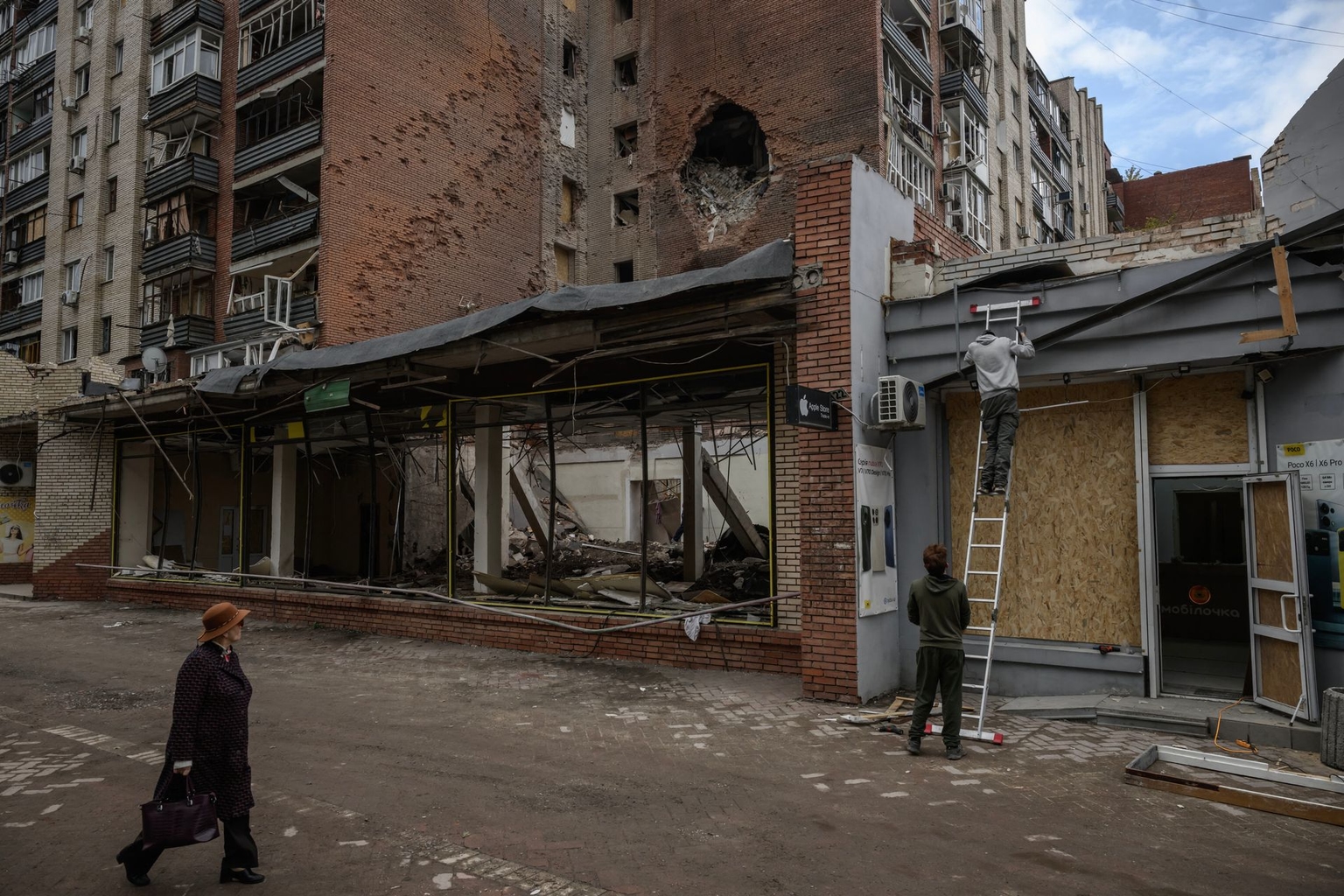
Why now?
Military analysts view the latest upgrade as part of the natural cycle of adaptation in the war.
“Russia uses a particular method of air and missile attack, Ukraine finds a solution or a counter, and then Russia's going to continue, as long as it prosecutes the war, trying to find counters to that,” Rumbaugh said.
“Ukrainian air defenders must stay flexible and adaptive to find solutions not just to this challenge, but to the next ones that will inevitably come.”
Kryvolap echoes this view, noting that the newest KAB modifications do not change the battlefield dynamics fundamentally
“This only shows that the Russians — just as they wanted to destroy Ukraine before — still do. They continue testing new ways of doing it. Aside from additional destruction and the demoralization of civilians, this KAB upgrade brings nothing truly new to the battlefield.”
Dmytro Basmat contributed to the reporting.









